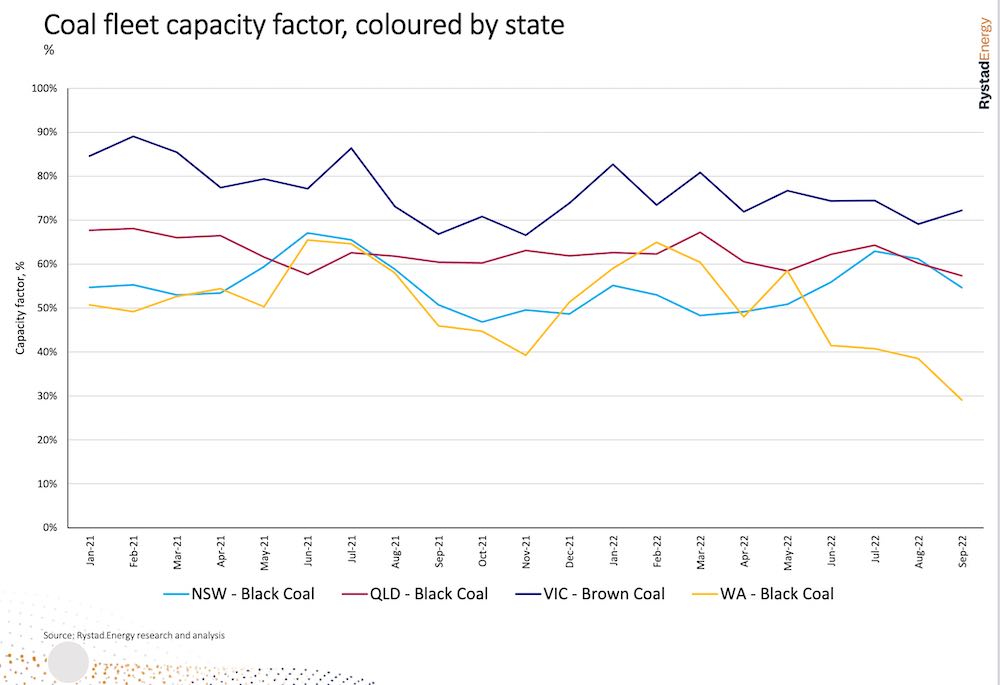Last week RenewEconomy reported that Western Australia’s Collie coal-fired power station was being shuttered for three-months due to a combination of coal shortages and strong daytime supply from the state’s huge rooftop solar resource.
The 318MW coal plant Collie power station – which is managed by government-owned utility Synergy – has been undergoing this “forced outage” since September 13, according to the Australian Energy Market Operator.
With Collie gone, new data from Rystad Energy shows the state’s coal fleet capacity factor – the measure of how often the state’s coal plants are running at maximum power – is looking pretty miserable.
“At a state level, coal shortages have seen the capacity factor of Western Australia’s coal fleet fall below 30%,” says Rystad senior renewables analyst David Dixon.
“Synergy’s 318MW Collie coal plant will be out until January following coal shortages at the Collie coal mine. The news is not good at nearby Griffin coal mine which went into receivership last month. Griffin supplies the 434MW Bluewaters coal power station. The two facilities generated ~19% of the WEM’s electricity in 2021.”
A sign of the times
The outage at Collie, however, reminds us of one of the key reasons why Western Australia’s Labor government has announced plans to close all state-owned coal generators by 2030 and accelerate the shift to renewables.
As WA energy minister Bill Johnston put it at the time, the viability of the two government’s two remaining coal plants – Collie and Muja – is increasingly being eroded by strong growth in renewables uptake, particularly in rooftop solar, and it not longer makes sense to prop up the generators.
As things stand, Collie power station is set of a 2027 closure date, while units at the 1,100MW Muja power station are slated to close progressively, with Muja D to close by 2029.









